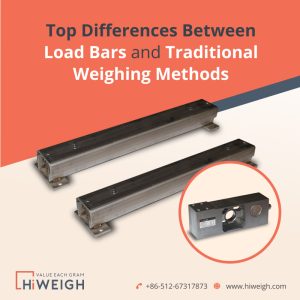


Precision and efficiency are critical in the fast-paced world of contemporary agriculture. Accurate measurement of crop yields, livestock weights, and other important agricultural metrics is significant for farm management and decision-making. For years, traditional weighing systems have been the backbone of farming, but as technology advances, load bars have arisen as a game-changing alternative. So if you are thinking about investing in 600mm load bars, this comparison between load bars and traditional weighing systems to assist farmers will help you arrive at an informed decision.
Traditional Weighing Methods
Manual Scales
Farmers have traditionally used manual scales, such as platform scales and spring scales, to weigh their products or cattle. These scales need manual labour and are frequently time-consuming, making them unsuitable for large-scale operations.
Weighing by amount
In certain circumstances, farmers estimate weights based on the amount of their products, which can be inaccurate and result in measurement errors.
The Rise of Load Bars
Load bars are specialised electrical devices used to precisely and effectively measure weights. Here’s how they stack up against traditional methods:
Accuracy
Load bars give extremely accurate weight readings, lowering the possibility of mistakes associated with manual scales or volume estimation.
Efficiency
Load bars are meant to be efficient, allowing farmers to collect weight measurements quickly and simply. This time-saving feature is especially useful during hectic harvest or animal handling seasons.
Portability
Load bars are movable and may be utilised in a variety of areas on the farm, making them adaptable for a variety of uses.
Data Integration
Many load bar systems have data recording and integration capabilities, allowing farmers to preserve digital records of weight readings for analysis and decision-making.
Considerations for Cost
While load bars provide various benefits, they do require an upfront investment. Farmers should assess the expense of this technology against the possible benefits of time savings, accuracy, and data management.
Selecting the Best Weighing Method
The decision between load bars and traditional weighing systems is ultimately determined by the demands and resources of the farm. Farmers should think about things like the size of their enterprise, the sorts of goods they manage, and their budget.
Choosing the Right Load Bars for Agriculture
Load bars have revolutionised the way farmers measure and manage their crops and livestock in modern agriculture. Choosing the correct load bars is critical for attaining precision, efficiency, and accuracy in your weighing procedures, whether you’re a small-scale farmer or part of a major agricultural enterprise.
- Weight capacity
The weight capacity of load bars is the most important factor to consider while choosing them. Determine the heaviest weight you plan to measure with the load bars to ensure they are capable of handling the highest loads on your farm. To handle prospective growth or changes in load size, use load bars with a capacity somewhat greater than your current demands.
- Accuracy and Precision
In agriculture, precise measurements are crucial. Look for load bars with a high degree of accuracy and precision. This guarantees that you obtain accurate weight measurements, which are necessary for yield estimates, quality control, and regulatory compliance.
- Durability and Construction
Since agricultural surroundings may be severe, load bars should be made to endure the elements. Consider load bars made of corrosion- and damage-resistant materials such as stainless steel or alloy steel. In addition, look for load bars with protective coatings to extend their life.
- Portability and Flexibility
The flexibility to relocate and use load bars in different areas of your farm may significantly enhance efficiency. Look for 600mm load bars that are portable and simple to set up. Some load bar systems are designed for rapid installation and may be utilised with a variety of weighing equipment, such as conveyor belts or chutes.
- Power Source
Load bars can require power to function. Determine if the load bars you’re interested in are battery-powered, require a power connection, or both. Battery-powered load bars are convenient, but they must be replaced or recharged on a regular basis.
- Calibration and Maintenance
Regular calibration ensures that your load bars are accurate. Check to see if the load bars you’re thinking about buying have simple calibration methods and come with calibration certifications. In addition, learn about maintenance needs and prices to guarantee that your load bars are in good working order.
Final Thoughts
In today’s ever-changing agricultural market, the decision between load bars and traditional weighing systems can have a substantial influence on a farm’s production and profitability. Load bars provide accuracy, efficiency, and data integration capabilities, which can improve farm management and decision-making. However, before making a selection, farmers must examine their specific needs and consider the benefits and drawbacks of each strategy. Load bars are expected to become an increasingly appealing alternative for farmers trying to optimise their operations as technology advances.
